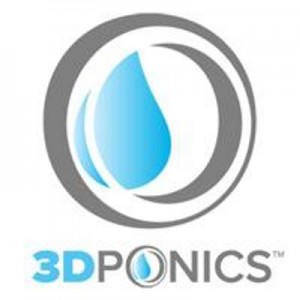 While most people associate it with foodies and the organically obsessed, the history of urban agriculture actually dates back to ancient Egypt. It has been a staple of food production for almost every densely populated civilization and famously Americans were encouraged to home-grow vegetables by the government back during World War II. At its peak, almost half of the produce consumed by Americans was grown in small, urban gardens and backyards, freeing up industrial agriculture resources for the war effort. The concept of urban farming and agriculture is rather simple: in areas where there simply isn’t the free land to cultivate large yield crops, proponents use what little free space they can find to grow what they can. It usually takes the form of small backyard gardens, potted patio gardens, and even, in modern times, soil-less hydroponics.
While most people associate it with foodies and the organically obsessed, the history of urban agriculture actually dates back to ancient Egypt. It has been a staple of food production for almost every densely populated civilization and famously Americans were encouraged to home-grow vegetables by the government back during World War II. At its peak, almost half of the produce consumed by Americans was grown in small, urban gardens and backyards, freeing up industrial agriculture resources for the war effort. The concept of urban farming and agriculture is rather simple: in areas where there simply isn’t the free land to cultivate large yield crops, proponents use what little free space they can find to grow what they can. It usually takes the form of small backyard gardens, potted patio gardens, and even, in modern times, soil-less hydroponics.
Itself not a new concept, hydroponics generally removes soil from the equation and instead relies on nutrient supplements and water to grow plants in a smaller area than traditional growing methods require. Beyond the cool factor of growing food in a new, high-tech way, the benefits include reduced pest infestations and a higher yield harvest. Until recently hydroponics set ups were often expensive and required more space, infrastructure, and technical know-how than most hopeful home gardeners were capable of. But with advancements in 3D printing, low-cost options are just now starting to become available.
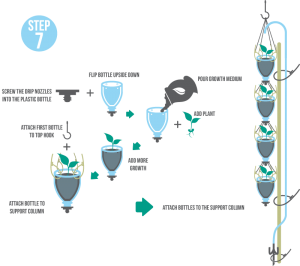 3Dponics is currently leading the charge of small, inexpensive at-home growing systems. The original 3Dponics system required only a handful of 3D printed parts, some old two liter soda bottles, and a small water pump. The tiered system was designed to be extremely simple to set up and use, and having actually used the original system to grow strawberries and tomatoes, it worked great. But while their original system worked, it clearly isn’t for everyone, so since their launch last year they have consistently been refining, improving, and even one-upping their first grow system.
3Dponics is currently leading the charge of small, inexpensive at-home growing systems. The original 3Dponics system required only a handful of 3D printed parts, some old two liter soda bottles, and a small water pump. The tiered system was designed to be extremely simple to set up and use, and having actually used the original system to grow strawberries and tomatoes, it worked great. But while their original system worked, it clearly isn’t for everyone, so since their launch last year they have consistently been refining, improving, and even one-upping their first grow system.
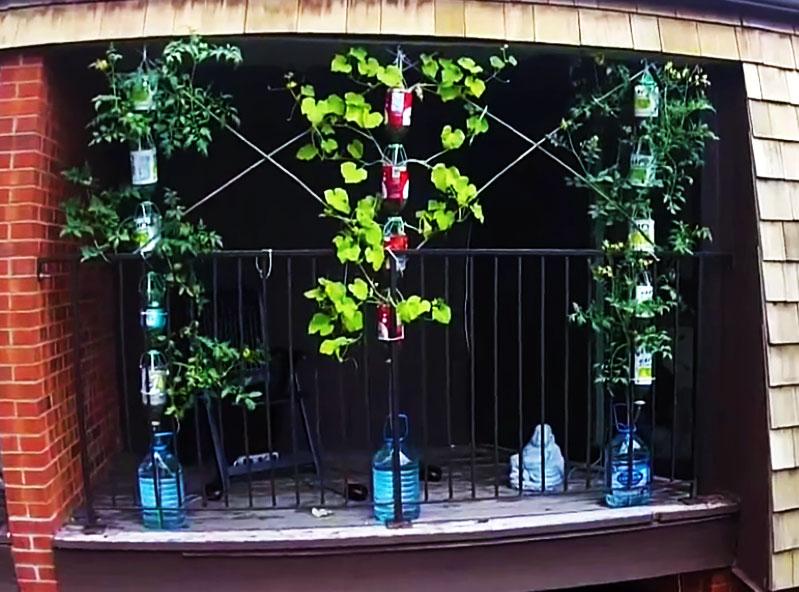 While the original drip system was a clever and innovative solution to growing plants in small spaces, it did have a lot of parts and required electricity. So 3Dponics developed a simplified non-circulating system that can be used indoors or out, removes the need for a pump, requires fewer parts, and once set up can be left alone to work itself for weeks at a time. But the largest improvement is in the system’s scalability. The actual grow container can be whatever size you can fit in your available growing space and the 3D printed parts can easily be customized specifically for your needs by just scaling the parts up or down. 3Dponics even developed a customizer app that makes it easy to enhance or improve your setup in any way that suits you.
While the original drip system was a clever and innovative solution to growing plants in small spaces, it did have a lot of parts and required electricity. So 3Dponics developed a simplified non-circulating system that can be used indoors or out, removes the need for a pump, requires fewer parts, and once set up can be left alone to work itself for weeks at a time. But the largest improvement is in the system’s scalability. The actual grow container can be whatever size you can fit in your available growing space and the 3D printed parts can easily be customized specifically for your needs by just scaling the parts up or down. 3Dponics even developed a customizer app that makes it easy to enhance or improve your setup in any way that suits you.
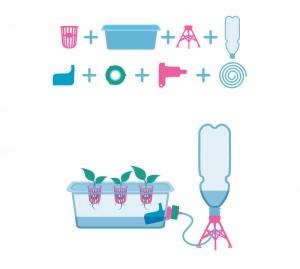 The non-circulating system on the surface looks closer to a traditional hydroponics setup than the original–however, it removes just about every complicated or delicate part that could trip up a newbie or someone with limited time to spend on maintenance. Just like the drip system it uses a discarded soda bottle in its design, in this case to feed the water and nutrient solution into the grow container. The system prevents over watering by using a simple floating device that blocks the flow when the water level is too high. The plants simply sit on top of the setup, resting in 3D printable grow planters with their root systems dipping into the container below. 3DPonics has all of the downloaded parts and instructions for the non-circulating setup available on their website, and they also recently uploaded an easy-to-follow Instructable.
The non-circulating system on the surface looks closer to a traditional hydroponics setup than the original–however, it removes just about every complicated or delicate part that could trip up a newbie or someone with limited time to spend on maintenance. Just like the drip system it uses a discarded soda bottle in its design, in this case to feed the water and nutrient solution into the grow container. The system prevents over watering by using a simple floating device that blocks the flow when the water level is too high. The plants simply sit on top of the setup, resting in 3D printable grow planters with their root systems dipping into the container below. 3DPonics has all of the downloaded parts and instructions for the non-circulating setup available on their website, and they also recently uploaded an easy-to-follow Instructable.
 And if even that system is too much for someone to handle, they are currently developing an even smaller and easier to use system that they’re calling the 3Dponics Cube Garden. The Cube Garden only requires three individual parts: a 3D printed pot, a 3D printed lid with a built-in planter basket, and a micro bubbler that can be purchased at any local hardware store for less than five bucks.
And if even that system is too much for someone to handle, they are currently developing an even smaller and easier to use system that they’re calling the 3Dponics Cube Garden. The Cube Garden only requires three individual parts: a 3D printed pot, a 3D printed lid with a built-in planter basket, and a micro bubbler that can be purchased at any local hardware store for less than five bucks.
“The 3Dponics Cube Garden is essentially another 3Dponics system, our 4th official system, after the drip hydroponics system, the non-circulating hydroponics system and the 3Dponics Mini. The parts are super easy to print. We printed the larger model on our MakerBot and the smaller one on the M3D. We’ve also sent the digital file to Re3d to print on their Gigabot. Because we’ve made them parametric files, anyone can customize them using the 3Dponics Customizer app,” explained 3Dponics’ Lucy Morrissey.
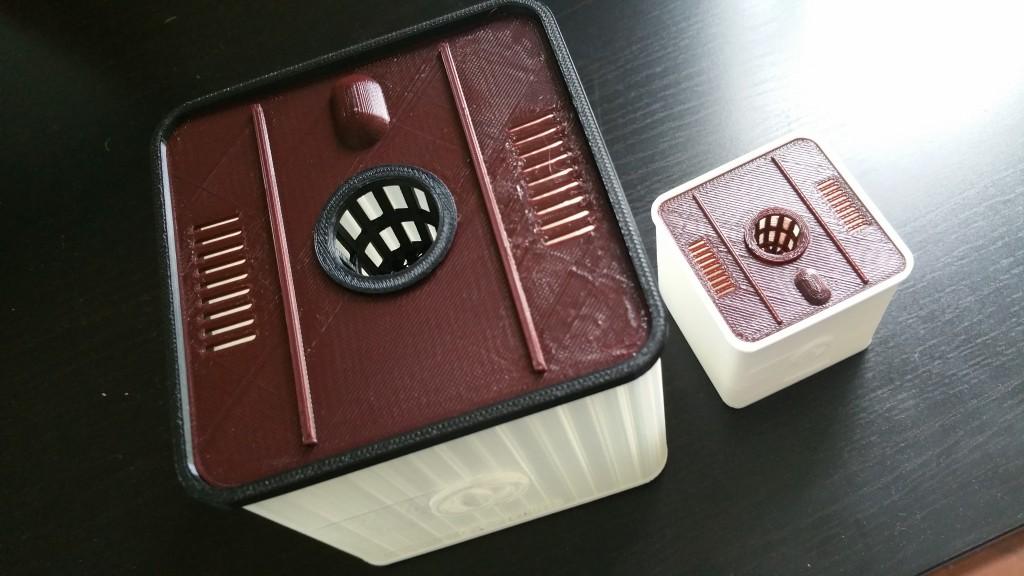 I’m really not sure if 3Dponics is going to be able to simplify a small-scale, indoor grow system any more than the Cube Garden. The 3Dponics team is still testing out the design and working out any kinks before they officially launch the system, but it should be available very soon. As with all of the 3Dponics systems, even if you don’t have a 3D printer you can order parts directly from them, or simply take the files to your local 3D printing service provider and have them printed for you.
I’m really not sure if 3Dponics is going to be able to simplify a small-scale, indoor grow system any more than the Cube Garden. The 3Dponics team is still testing out the design and working out any kinks before they officially launch the system, but it should be available very soon. As with all of the 3Dponics systems, even if you don’t have a 3D printer you can order parts directly from them, or simply take the files to your local 3D printing service provider and have them printed for you.
After years of killing every plant that I tried to nurture and grow I had pretty much given up on gardening. My thumb is about as far away from green as a thumb can get–really it’s more of a greyish brown thumb–but I’ve managed to be rather successful in using the drip system and I can’t recommend it enough. Have you used 3Dponics or any hydroponics systems? We would love to hear how they worked for you in the Cube Garden forum thread at 3DPB.com.
Subscribe to Our Email Newsletter
Stay up-to-date on all the latest news from the 3D printing industry and receive information and offers from third party vendors.
Print Services
Upload your 3D Models and get them printed quickly and efficiently.
You May Also Like
Johns Hopkins University Researchers Develop HyFAM Technology
Two scientists from Johns Hopkins University, Nathan C. Brown and Jochen Mueller, have developed a hybrid manufacturing technology they call HyFam, or Hybrid Formative Additive Manufacturing. Their work on this technology...
3D Printing G-Code Gets an Upgrade: T-Code
Good old G-Code still manages many 3D printers, great and small. Just like the STL, it’s a standard that enables collaboration while also holding the additive manufacturing (AM) industry back....
AM Rewind: The Biggest News and Trends of 2024
After a sluggish 2023, driven by persistent inflation and geopolitical tensions, 2024 has seen some recovery. Economic growth climbed from about 2.8 percent in 2023 to a modest 3.2 percent...
Metal Wire 3D Printer OEM ValCUN Announces Plans for 2025 Expansion
ValCUN, a Belgian original equipment manufacturer (OEM) of wire-based metal additive manufacturing (AM) hardware, has announced that the company has entered the next phase of its growth trajectory, making key...

































